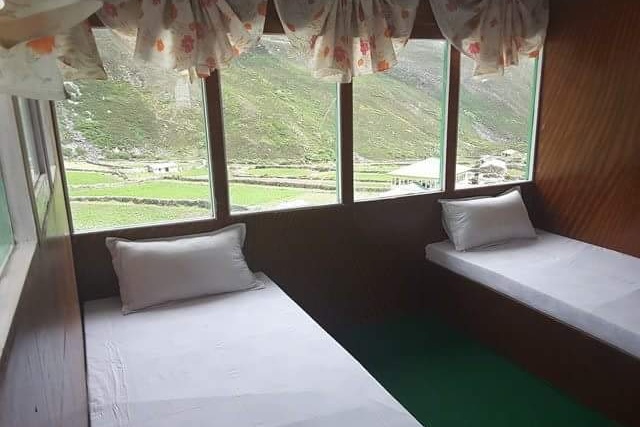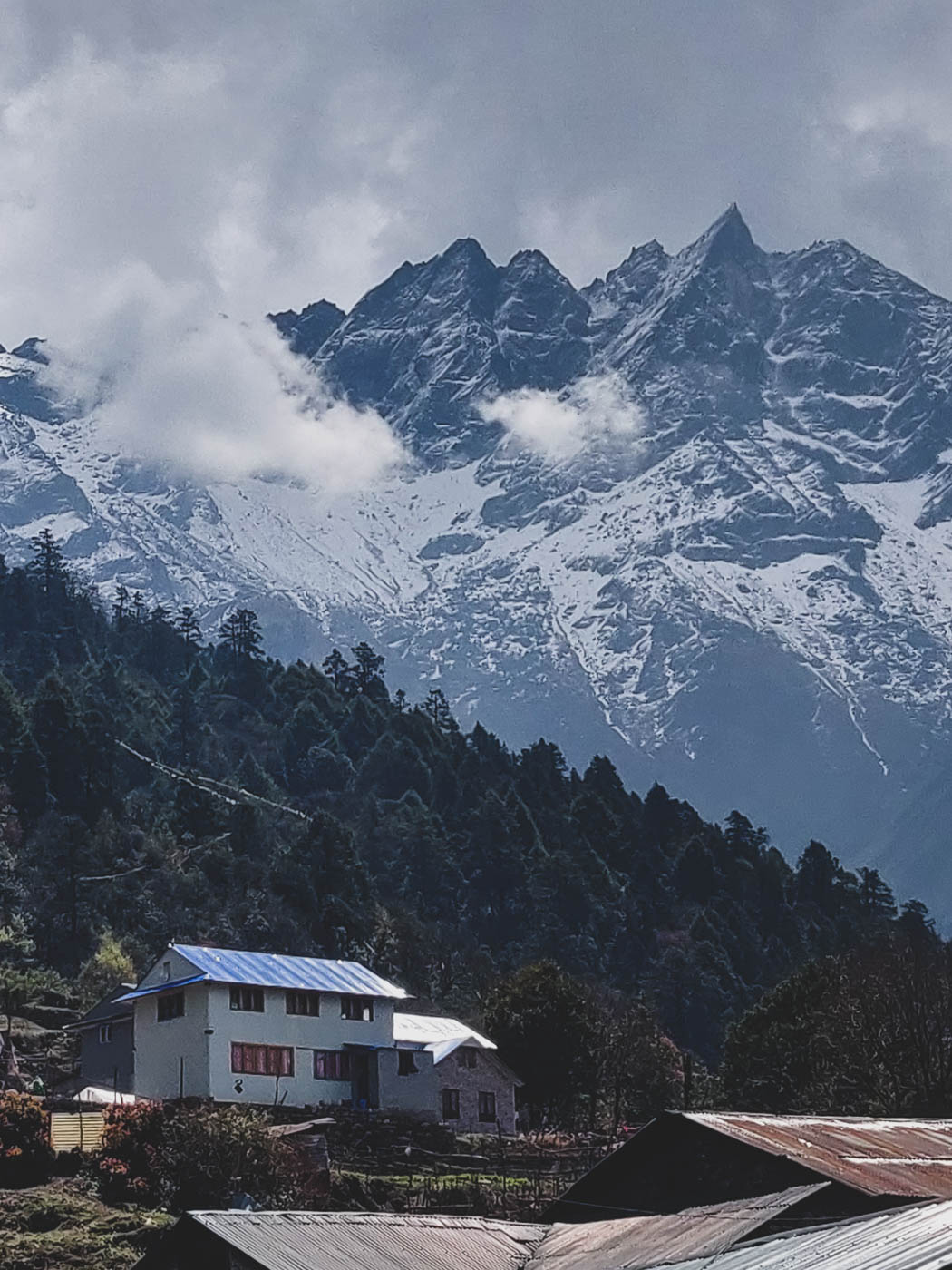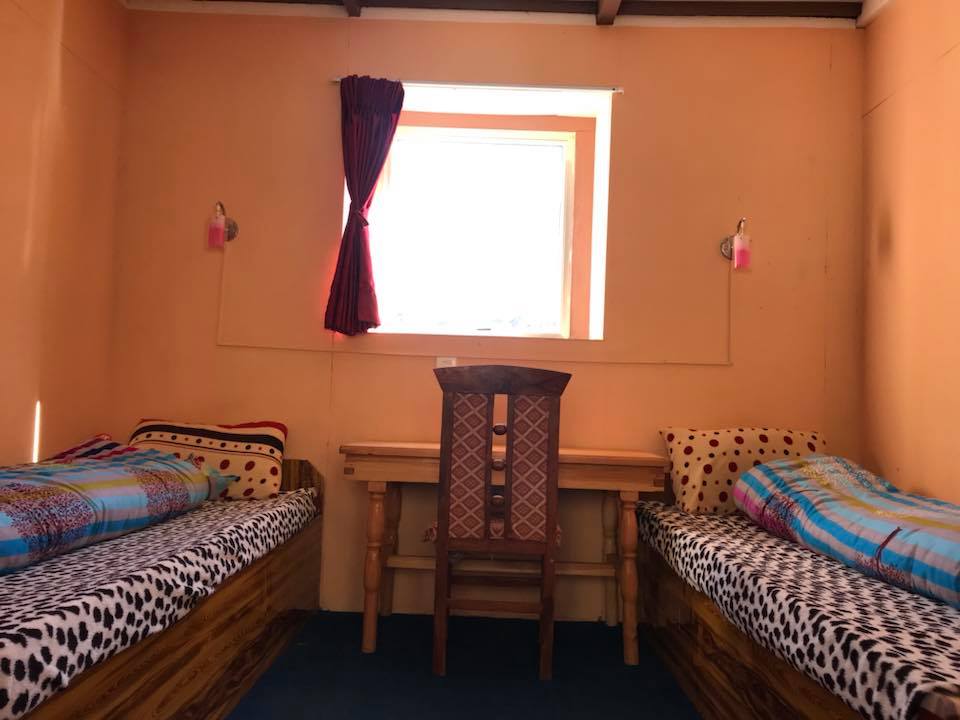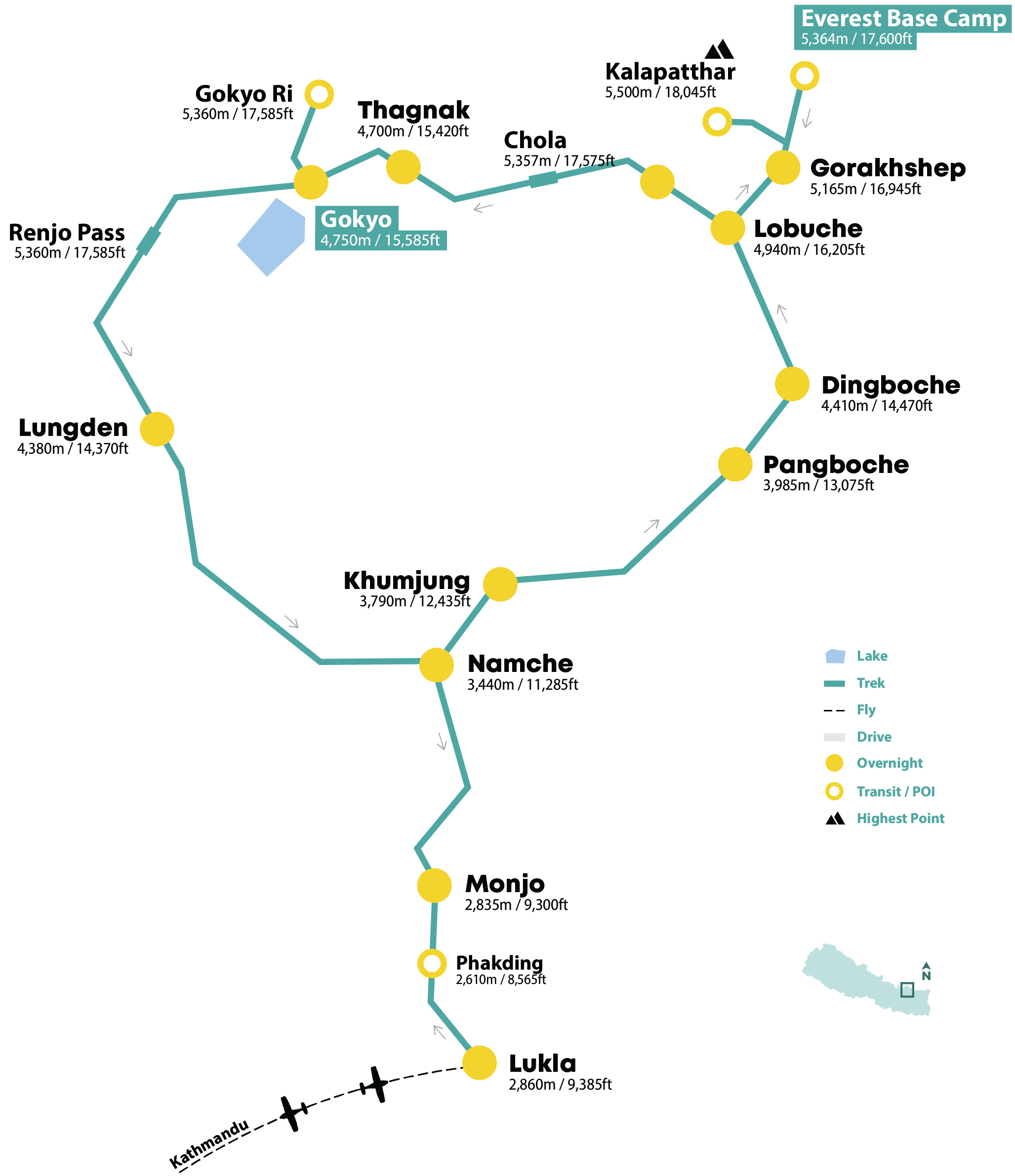|
Mountain Trek / Everest Region Everest Base Camp with Gokyo Lakes and Two Passes TrekNext tentative Date: Available as a Private Trek on a date of your preference.
Cross the exhilarating Chola and Renjo La Passes, trek to Everest Base Camp and Gokyo Lakes, and immerse yourself in the diverse landscapes, wildlife, and culture of Nepal’s iconic Everest region. |
Overview
The EBC with Gokyo Lakes, Chola Pass, and Renjo La Pass Trek is a remarkable journey through some of Nepal’s most iconic and diverse landscapes. The trails lead through Sherpa villages rich with culture and tradition, offering warm hospitality and insights into the local way of life. As the trail ascends, the landscape transforms into alpine meadows, glaciers, and crosses high passes, the thrilling Chola and Renjo La Passes. Along the way, there are breathtaking views of Everest, the turquoise Gokyo Lakes, and there will be chances to spot Himalayan wildlife like yaks and musk deer. This trek is a blend of natural beauty, cultural immersion, and high-altitude adventure, making it an unforgettable experience for any trekker.
Highlights
| Stunning High-Altitude Passes: Cross both the Chola Pass and Renjo La Pass, two challenging yet rewarding high-altitude routes, offering breathtaking panoramic views of the Everest, Lhotse, and Makalu ranges. | |
| Everest Base Camp & Gokyo Lakes: Visit two of the region’s most iconic destinations, Everest Base Camp and the serene, turquoise Gokyo Lakes, each surrounded by towering Himalayan peaks. | |
| Cultural Immersion in Sherpa Villages: Explore traditional Sherpa settlements like Namche, Khumjung, and Pangboche, where you’ll experience rich Buddhist culture, visit ancient monasteries, and interact with the welcoming Sherpa people. | |
| Varied Trekking Terrain: Trek through diverse landscapes, from lush forests and river valleys to barren high-altitude glaciers and rocky paths, making each day on the trail a unique adventure. | |
| Himalayan Wildlife Encounters: Spot rare wildlife such as Himalayan tahr, musk deer, and colorful pheasants. | |
| Scenic Summits: Hike up to the summits of Kalapathhar and Gokyo Ri for awe-inspiring sunrises over Everest and surrounding peaks, offering some of the best views in the Himalayas. | |
| Ultimate Trekking Experience: Combining the adventure of two high passes with cultural experiences and natural beauty, this trek offers the ultimate Himalayan challenge for seasoned trekkers seeking a comprehensive Everest region journey. |
The Everest Base Camp and Gokyo Lakes Trek (with Chola Pass and Renjo la Pass) is considered a challenging trek and requires a high level of fitness, as it involves long days of trekking at high altitudes and crossing several demanding mountain passes. It is recommended for experienced trekkers who have prior experience with high-altitude trekking and are well-prepared physically and mentally.
Our itineraries are designed to be moderately paced with adequate acclimatization stops, and you will have great logistical support with experienced mountain guides and porters to carry your luggage all along. Except for the day when you cross Chola Pass, you will be going slow and easy with an average walking duration of 5-7 hours a day. There are mountain lodges all along the trek to keep you warm and well-fed. You will be staying in extremely basic lodges at Lobuche, Gorakshep, Dzongla, Thagnak and Lungden./p>
Best time to go
JanFebMarAprMayJunJulAugSepOctNovDec
JanFebMarAprMayJun
JulAugSepOctNovDec
| Group Sizepax | Fixed Departureprices per person | Regularprices per person |
| 2 | USD 1785 | |
| 3 | USD 1630 | |
| 4 - 7 | USD 1575 | |
| 8 & up | USD 1450 |
|
|
|
|
|
Prices valid until Dec 31st, 2026
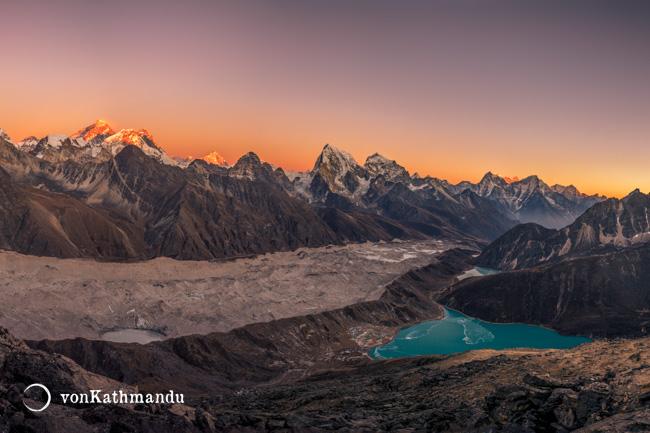
Gokyo Lakes, Khumbu mountain range and Ngozumpa , the longest glacier in Nepal, seen from Gokyo Ri
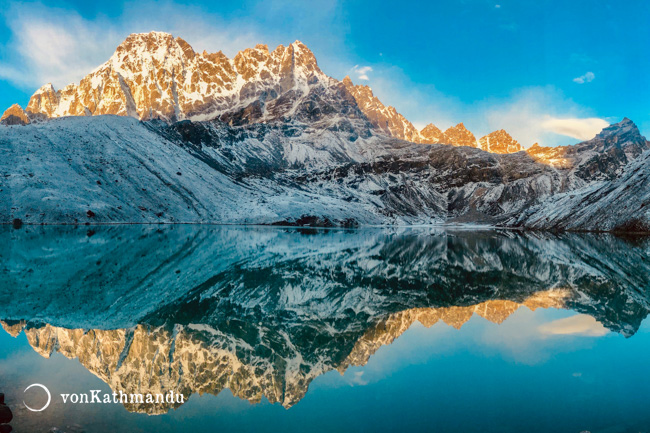
Still waters of Gokyo Lake catch reflection of its rocky surrounding
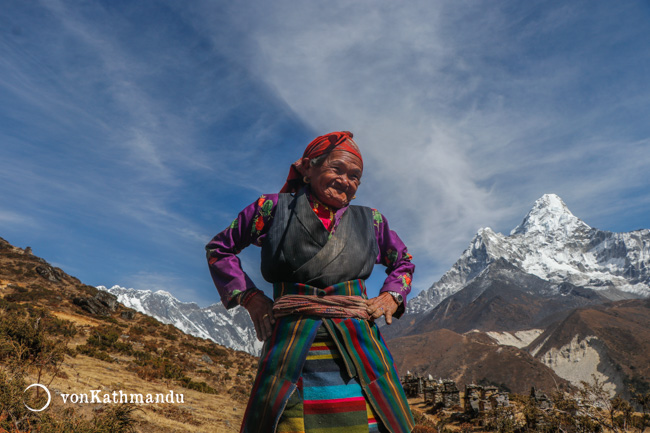
A lady in Pangboche clad in vibrant Sherpa attire called Bakkhu
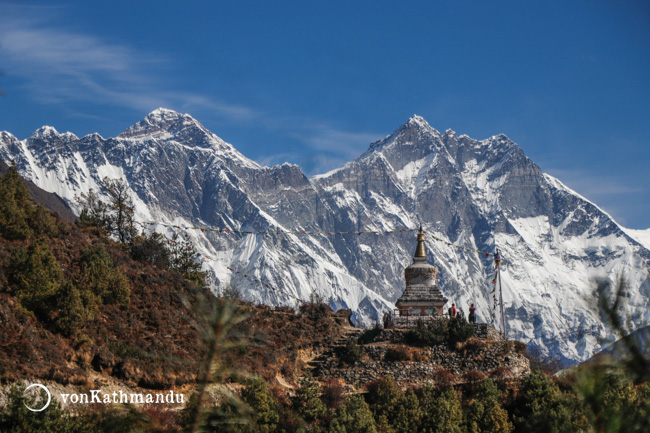
Gorgeous view of Everest and Lhotse seen from the walk from Namche towards Tengboche
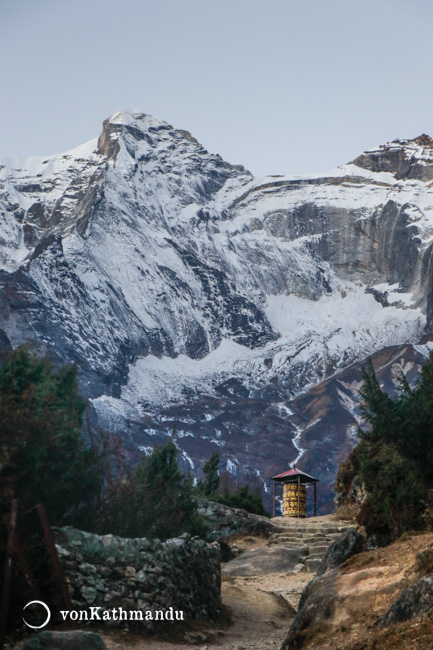
Buddhist prayer wheel in Namche outskirts beneath Kongde mountain
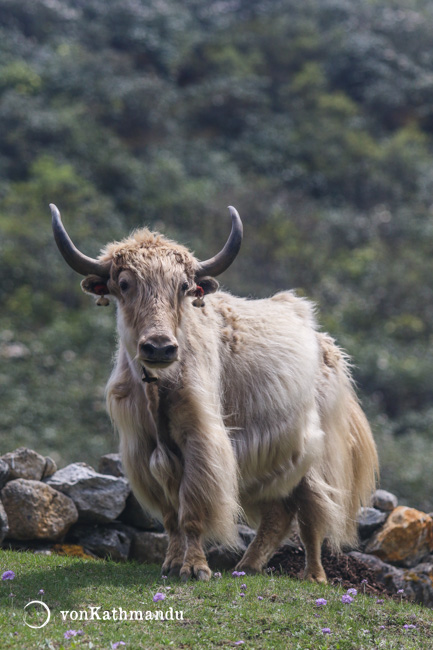
Yaks are commonly used for their wool, milk, meat and hide. Yak cake, dried yak dung, is used as fuel in the kitchen
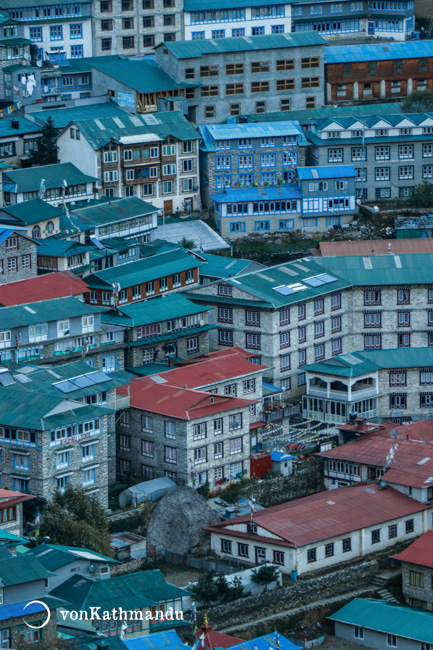
From a tiny hamlet, Namche has steady grown in the last couple of decades to become a sizeable and dense town
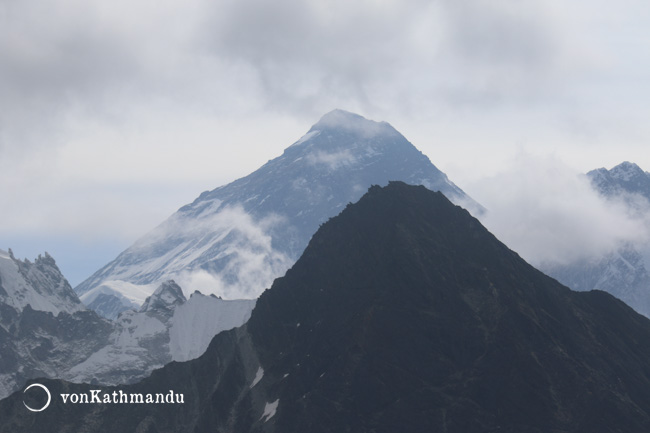
Everest appears as you make the climb to Gokyo Ri
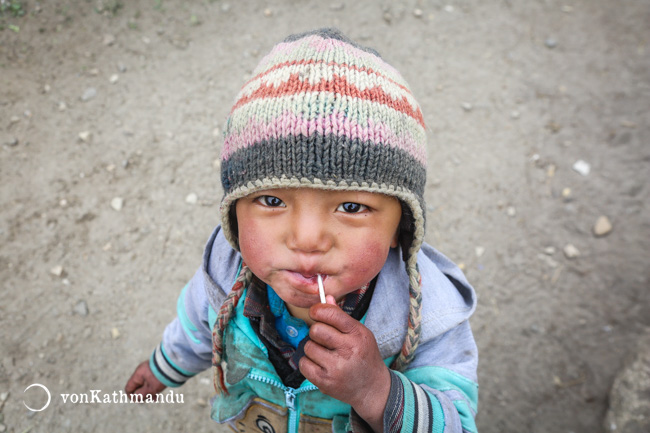
Little Sherpa kid. Cold wind and low moisture leads to rosy red cheeks in highlands
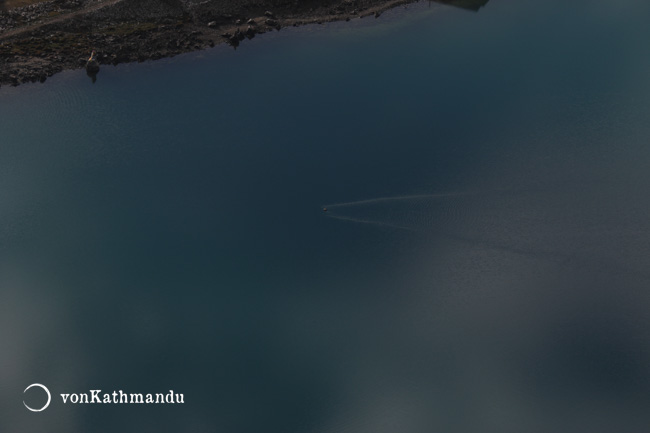
Bird taking a swim in Gokyo Lake
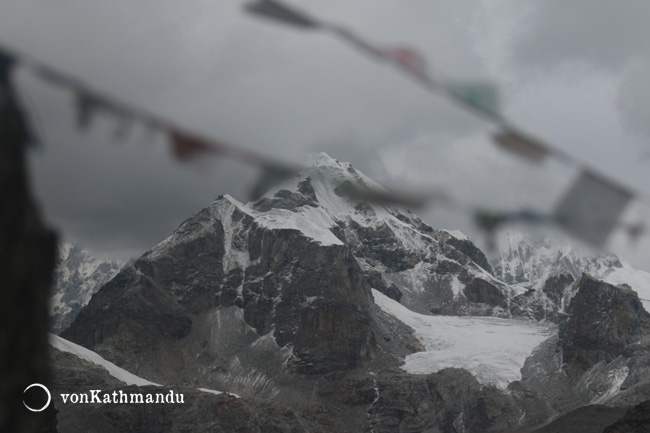
Mountains appear seemingly at an eye level from Gokyo Ri
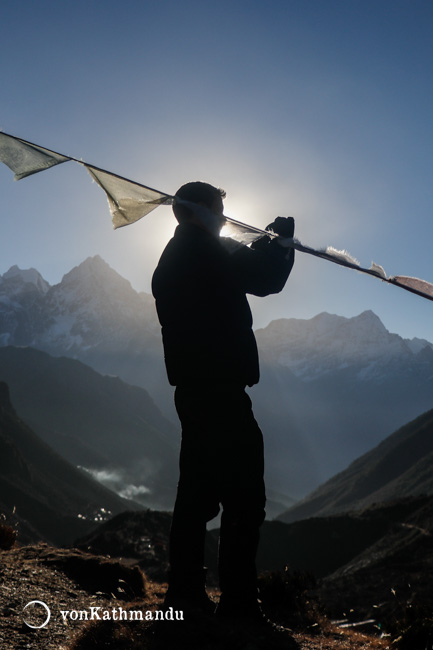
Mornings in mountains are a sight to behold
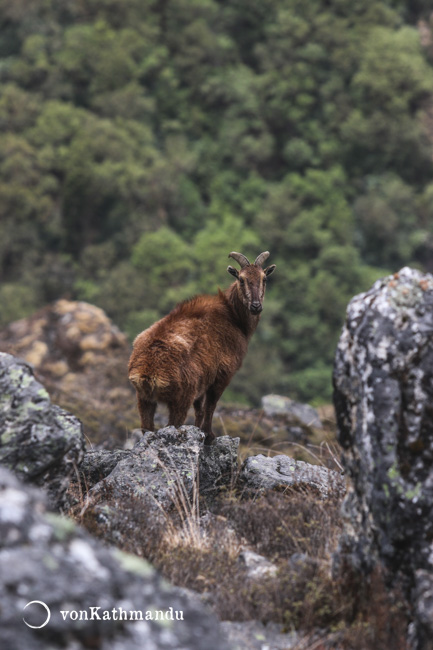
Himalayan Tahrs are not an uncommon sight on the trek
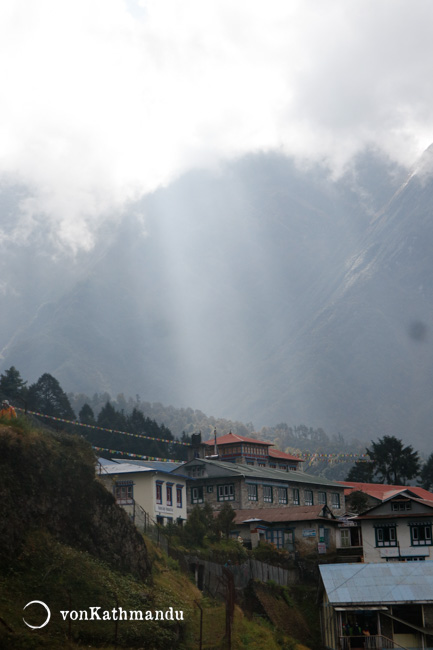
Hazy morning in Lukla
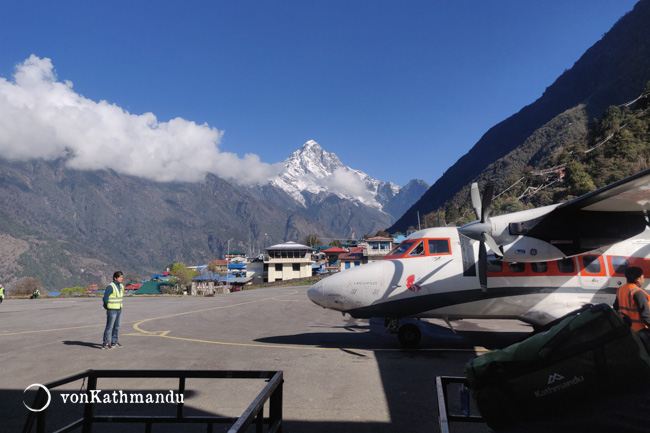
Perched on a hillside, Lukla Airpot is as thrilling as it is picturesque
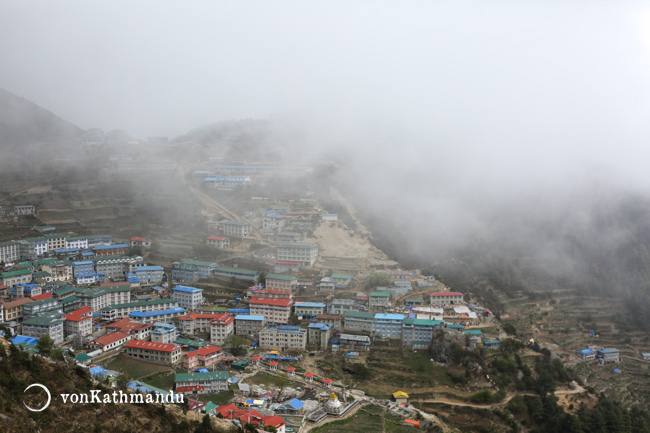
The ampitheatre of Namche Bazaar, often called the gateway to Everest
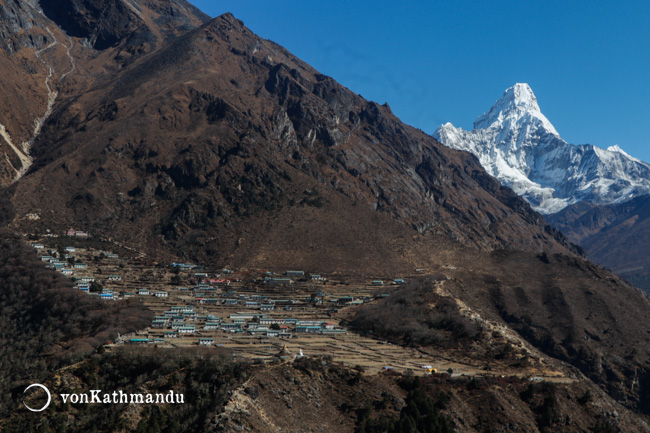
Photrse village is a secluded and peaceful village that sits on a small plateau amidst surrounding rugged terrain
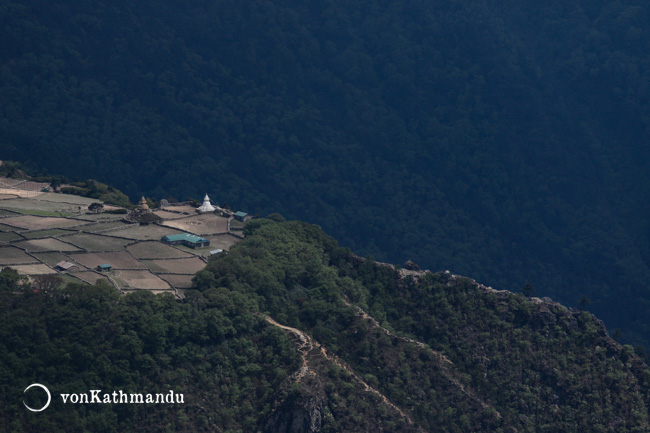
The old and the new chhortens of Phortse village
Itinerary
|
Day 1 |
Kathmandu - Manthali - Lukla - Monjo |
|
|
Day 2 |
Monjo - Namche |
|
|
Day 3 |
Namche - Khumjung |
|
|
Day 4 |
Khumjung - Pangboche |
|
|
Day 5 |
Pangboche - Dingboche |
|
|
Day 6 |
Dingboche Acclimatization |
|
|
Day 7 |
Dingboche - Lobuche |
|
|
Day 8 |
Lobuche - Gorakhshep - EBC - Gorakhshep |
|
|
Day 9 |
Gorakshep - Kalapathhar - Dzongla |
|
|
Day 10 |
Dzongla - Chola Pass - Thagnak |
|
|
Day 11 |
Thagnak - Gokyo |
|
|
Day 12 |
Gokyo - Gokyo Ri - Gokyo |
|
|
Day 13 |
Gokyo - Renjo La Pass - Lungden |
|
|
Day 14 |
Lungden - Namche |
|
|
Day 15 |
Namche - Lukla |
|
|
Day 16 |
Lukla - Manthali - Kathmandu |
|
|
Day 1 |
Kathmandu - Manthali - Lukla - Monjo |
|
|
Drive from Kathmandu to Manthali Airport 3.5 to 4.5 hrs An early morning drive from Kathmandu on winding roads takes us to Manthali, a tiny little town in Ramechhap district. Manthali Airport has been the gateway to Lukla since 2019. We start around 2 or 3 am in the morning following the Sunkoshi and Tamakoshi rivers, and reach Manthali right on time to catch the 6:30 or 7 am flight to Lukla. Note: All the flights to Lukla operate from Manthali Airport, Ramechhap during the months of March, April, May, October, November and December. |
|
|
Fly from Manthali to Lukla 20 mins A short, scenic and exhilarating mountain flight takes us from Manthali to Lukla, the gateway of Everest Region. |
|
|
Trek from Lukla to Monjo 5 to 6 hrs | 12 kms (7.5 mi) Highest point: Lukla at 2860m (9383ft) | Gain/drop: +604m/-638m (+1982ft/-2093ft) We meet the rest of our crew, arrange our baggages, have breakfast, and embark on a journey to Monjo, passing exciting suspension bridges and tiny village settlements following the Koshi river. If the flight is delayed causing late hike start, we will call it a day in Phakding (1-2hrs before Monjo). |
Meals Included: Breakfast
Accommodation: Mountain Lodge
|
Day 2 |
Monjo - Namche |
|
|
Trek from Monjo to Namche 4 to 6 hrs | 6 kms (3.5 mi) Highest point: Namche at 3440m (11286ft) | Gain/drop: +976m/-354m (+3202ft/-1161ft) We walk northward along the banks of Koshi and reach the entry point of Sagarmatha National Park, from where the gruelling uphill awaits before we reach the amphitheater town of Namche, nestled perfectly atop a hill. Spend the rest of the day exploring monasteries, mountain museums, tiny cafes and coffee bars. |
Meals Included: Breakfast
Accommodation: Mountain Lodge
|
Day 3 |
Namche - Khumjung |
|
|
Trek from Namche to Khumjung (Acclimatization) 4 to 5 hrs | 7 kms (4.5 mi) Highest point: Syangboche at 3880m (12730ft) | Gain/drop: +490m/-127m (+1608ft/-417ft) We take it slow and easy to the peaceful and serene settlement of Khumjung today. We stop by Hotel Everest View for a stunning view of the Everest mountain chain on the way. The green-roofed valley of Khumjung and Khunde offers several options to explore, including a monastery housing a (supposed) yeti scalp and a school established by Edmund Hillary. |
Meals Included: Breakfast
Accommodation: Mountain Lodge
|
Day 4 |
Khumjung - Pangboche |
|
|
Trek from Khumjung to Pangboche 5 to 6 hrs | 11 kms (7 mi) Highest point: Pangboche at 3985m (13074ft) | Gain/drop: +1025m/-876m (+3363ft/-2874ft) The walk on the first bit is a combination of minor uphills, downhills and flats with views of the picturesque Ama Dablam mountain staying with us, followed by an arduous uphill to Tengboche. After exploring the biggest monastery of the region, we trudge on and stop at Pangboche village, with equally impressive sights. |
Meals Included: Breakfast
Accommodation: Mountain Lodge
|
Day 5 |
Pangboche - Dingboche |
|
|
Trek from Pangboche to Dingboche 3 to 4 hrs | 6 kms (3.5 mi) Highest point: Dingboche at 4410m (14469ft) | Gain/drop: +477m/-67m (+1565ft/-220ft) We're greeted by the charismatic Ama Dablam in the morning. The trek to Dingboche today is only a few hours, but you will feel the altitude and notice a complete change in vegetation and landscape as we leave the tree line behind and walk the arid lands of Khumbu. We settle in a mountain lodge, our home for the following day. You can either choose to rest or take short hikes to nearby hills. |
Meals Included: Breakfast
Accommodation: Mountain Lodge
|
Day 6 |
Dingboche Acclimatization |
|
|
Acclimatization hike to Nangkartsang and rest in Dingboche 3 to 4 hrs | 5 kms (3 mi) Highest point: Nangkartsang mid way at 4800m (15748ft) | Gain/drop: +510m/-510m (+1673ft/-1673ft) In the morning, we take an acclimatization hike to the Nangkartsang peak or a hilltop before it. We are rewarded with the alluring face of Ama Dablam and severeal other mountains from this gorgeous vantage point. We slowly head down for lunch, and have the rest of the day for leisure. |
Meals Included: Breakfast
Accommodation: Mountain Lodge
|
Day 7 |
Dingboche - Lobuche |
|
|
Trek from Dingboche to Lobuche 4 to 5 hrs | 8 kms (5 mi) Highest point: Lobuche at 4940m (16207ft) | Gain/drop: +736m/-129m (+2415ft/-423ft) After a gradual uphill, we walk the wide barren flats until the white-washed rocky terrains show up. Lobuche memorial sits right where our short but tough uphill ends. We take a break here to admire the grandeur of the Himalayas and pay respect to all who lost their lives in the mountains. In no time, you’ll find yourself walking on lateral moraines of Khumbu glacier before you reach Lobuche. |
|
|
Acclimatization walk to glacier ridge 1 to 1.5 hrs | 1.5 kms (0.5 mi) Highest point: Glacier ridge at 4990m (16371ft) | Gain/drop: +50/-50m (+164ft/-164ft) We take a short walk up to the ridge with great view of the glacier and surrounding mountains. |
Meals Included: Breakfast
Accommodation: Mountain Lodge
|
Day 8 |
Lobuche - Gorakhshep - EBC - Gorakhshep |
|
|
Trek from Lobuche to Gorakhshep 2 to 3 hrs | 5 kms (3 mi) Highest point: Gorakhshep at 5165m (16946ft) | Gain/drop: +282m/-54m (+925ft/-177ft) We set off to Gorakhshep (the last settlement) on rocky trails shared by yak caravans ferrying goods. Khumbu glacier stays right next to you with tiny turquoise water bodies. |
|
|
Hike to Everest Base Camp, and back to Gorakhshep 3 to 5 hrs | 6.5 kms (3.5 mi) Highest point: Everest Base Camp at 5364m (17598ft) | Gain/drop: +231m/-231m (+758ft/-758ft) We leave our bags in the hotel (our home for the night), have a quick lunch, and set about to the grand prize - Everest Base Camp. Setting foot on the icy terrain surrounded by mountains on all sides is an ineffable feeling. Relish the moment by taking pictures with the massifs of Khumbu mountains on the backdrop before heading back. |
Meals Included: Breakfast
Accommodation: Mountain Lodge
|
Day 9 |
Gorakshep - Kalapathhar - Dzongla |
|
|
Morning hike to Kalapatthar view point and back to Gorakhshep 3 to 4 hrs | 3.5 kms (2 mi) Highest point: Kalapatthar at 5500m (18045ft) | Gain/drop: +475m/-475m (+1558ft/-1558ft) A pre-dawn start to Kalapatthar as we set off on a grueling ascent to catch the first rays of golden light over Everest. Everest stands tall and enchanting with the other giants in the frame - Lhotse and Nuptse adjoining to the right and left from the viewpoint of Kalapatthar. Pumori perfects the frame with its imposing massif. |
|
|
Trek to Dzongla 3 to 4 hrs | 10 kms (6 mi) Highest point: Gorakhshep at 5165m (16946ft) | Gain/drop: +179m/-501m (+587ft/-1644ft) We begin our descent on the same trails we came from. After walking for about half an hour down from Lobuche, we encounter an intersection and turn right towards Dzongla. The trails are relatively flat, and along the way, you will be captivated by a beautiful turquoise lake. |
Meals Included: Breakfast
Accommodation: Mountain Lodge
|
Day 10 |
Dzongla - Chola Pass - Thagnak |
|
|
Trek from Dzongla to Thagnak (via Chola Pass) 7 to 8 hrs | 8 kms (5 mi) Highest point: Chola Pass at 5357m (17575ft) | Gain/drop: +616m/-778m (+2021ft/-2552ft) The most adventurous part of the trek awaits us. We will start early in the morning with packed lunches to catch the sunrise along the way. Today's journey involves crossing icy terrains, loose rocks, and moving glaciers. Don’t worry, your guide will have microspikes/crampons for you. After a demanding 3-4 hours ascent, we will be greeted by Chola Pass, adorned with fluttering prayer flags. From this vantage point, you can enjoy breathtaking 360-degree views of the surrounding mountains before we make our way down to Thagnak, a settlement with a few teahouses. |
Meals Included: Breakfast
Accommodation: Mountain Lodge
|
Day 11 |
Thagnak - Gokyo |
|
|
Trek from Thagnak to Gokyo 2 to 3 hrs | 7.5 kms (4.5 mi) Highest point: Gokyo at 4750m (15584ft) | Gain/drop: +347m/-278m (+1138ft/-912ft) Our route leads us to the enchanting Gokyo village, nestled next to Dudh Pokhari, one of the Gokyo lakes. The initial part of the trail involves crossing the Ngozumpa Glacier, the longest glacier in the Himalayas below Mt. Cho Oyu. You will traverse rivers and uneven rocky terrains over ice before the Gokyo lakes come into view. |
|
|
Afternoon exploration to Gokyo lakes |
Meals Included: Breakfast
Accommodation: Mountain Lodge
|
Day 12 |
Gokyo - Gokyo Ri - Gokyo |
|
|
Trek to Gokyo Ri view point 4 to 6 hrs | 4 kms (2.5 mi) Highest point: Gokyo Ri at 5360m (17585ft) | Gain/drop: +596m/-596m (+1955ft/-1955ft) Gokyo Ri, a couple of hours' climb from the village, offers one of the most scenic viewpoints to behold the beauty of the Himalayas, and the cluster of Gokyo lakes adds to the splendor. We hike up in the evening to witness the colors of the golden sunrise over the world's highest mountains. |
Meals Included: Breakfast
Accommodation: Mountain Lodge
|
Day 13 |
Gokyo - Renjo La Pass - Lungden |
|
|
Trek from Gokyo to Lungden via Renjo Pass 7 to 8 hrs | 11 kms (7 mi) Highest point: Renjo La Pass at 5360m (17585ft) | Gain/drop: +624m/-1041m (+2047ft/-3415ft) Today, our trail meanders through high-altitude terrain, revealing glacial lakes and rocky ridges. Renjo pass offers views of the iconic Himalayan peaks, including Everest, Lhotse, and Ama Dablam. |
Meals Included: Breakfast
Accommodation: Mountain Lodge
|
Day 14 |
Lungden - Namche |
|
|
Trek from Lungden to Namche 7 to 8 hrs | 17 kms (10.5 mi) Highest point: Lungden at 4380m (14370ft) | Gain/drop: +195m/-1150 (+640ft/-3773ft) The trail is very long involving some steep ascents and descents. Forested paths will accompany us as we pass several villages before reaching Namche, where a hot shower and celebratory dinner await. |
Meals Included: Breakfast
Accommodation: Mountain Lodge
|
Day 15 |
Namche - Lukla |
|
|
Trek from Namche to Lukla 6 to 8 hrs | 18 kms (11 mi) Highest point: Namche at 3440m (11286ft) | Gain/drop: +932m/-1560m (+3058ft/-5118ft) The final trekking day is also a long one. We leave Namche and take the same route back to Lukla. The team will gather to share laughs and maybe raise a glass or two before flying out of Lukla the next morning. We thank porters and assistant guide, and bid them farewell. |
Meals Included: Breakfast
Accommodation: Mountain Lodge
|
Day 16 |
Lukla - Manthali - Kathmandu |
|
|
Fly from Lukla to Manthali airport 20 mins An early breakfast and we fly out of Khumbu with glimpses of the mountains we saw from the trails. |
|
|
Drive from Manthali to Kathmandu 5 to 6 hrs With memories to cherish a lifetime, we hop on our car and drive back to Kathmandu on the same roads we took the first day. |
Meals Included: Breakfast
Mountain Lodge |
X Close Accommodation Popup
X Close Popup
Nepal
Mountain lodges are the basic accommodation set up by locals to cater to trekkers in the trails. The common features across all lodges are standard rooms, a spacious and heated dining hall, and a restaurant with a menu. The rooms in mountain lodges generally have two or three twin beds with a mattress and blanket. If you are used to sleeping warm, we highly recommend bringing your own sleeping bag and liner. Other amenities could be a table, hanger, and dustbin but do not expect to have charging ports and attached toilets in the rooms. Moreover, it is mandatory to have meals in the facility you’re staying at.
Room Amenities
| • | Shared Toilet |
Property Amenities
| • | Restaurant and Bar | • | Outdoor Seating | • | Mountain Views |
Mountain Lodge |
X Close Accommodation Popup
X Close Popup
Nepal
Mountain lodges are the basic accommodation set up by locals to cater to trekkers in the trails. The common features across all lodges are standard rooms, a spacious and heated dining hall, and a restaurant with a menu. The rooms in mountain lodges generally have two or three twin beds with a mattress and blanket. If you are used to sleeping warm, we highly recommend bringing your own sleeping bag and liner. Other amenities could be a table, hanger, and dustbin but do not expect to have charging ports and attached toilets in the rooms. Moreover, it is mandatory to have meals in the facility you’re staying at.
Room Amenities
| • | Shared Toilet |
Property Amenities
| • | Restaurant and Bar | • | Outdoor Seating | • | Mountain Views |
Mountain Lodge |
X Close Accommodation Popup
X Close Popup
Nepal
Mountain lodges are the basic accommodation set up by locals to cater to trekkers in the trails. The common features across all lodges are standard rooms, a spacious and heated dining hall, and a restaurant with a menu. The rooms in mountain lodges generally have two or three twin beds with a mattress and blanket. If you are used to sleeping warm, we highly recommend bringing your own sleeping bag and liner. Other amenities could be a table, hanger, and dustbin but do not expect to have charging ports and attached toilets in the rooms. Moreover, it is mandatory to have meals in the facility you’re staying at.
Room Amenities
| • | Shared Toilet |
Property Amenities
| • | Restaurant and Bar | • | Outdoor Seating | • | Mountain Views |
Mountain Lodge |
X Close Accommodation Popup
X Close Popup
Nepal
Mountain lodges are the basic accommodation set up by locals to cater to trekkers in the trails. The common features across all lodges are standard rooms, a spacious and heated dining hall, and a restaurant with a menu. The rooms in mountain lodges generally have two or three twin beds with a mattress and blanket. If you are used to sleeping warm, we highly recommend bringing your own sleeping bag and liner. Other amenities could be a table, hanger, and dustbin but do not expect to have charging ports and attached toilets in the rooms. Moreover, it is mandatory to have meals in the facility you’re staying at.
Room Amenities
| • | Shared Toilet |
Property Amenities
| • | Restaurant and Bar | • | Outdoor Seating | • | Mountain Views |
Mountain Lodge |
X Close Accommodation Popup
X Close Popup
Nepal
Mountain lodges are the basic accommodation set up by locals to cater to trekkers in the trails. The common features across all lodges are standard rooms, a spacious and heated dining hall, and a restaurant with a menu. The rooms in mountain lodges generally have two or three twin beds with a mattress and blanket. If you are used to sleeping warm, we highly recommend bringing your own sleeping bag and liner. Other amenities could be a table, hanger, and dustbin but do not expect to have charging ports and attached toilets in the rooms. Moreover, it is mandatory to have meals in the facility you’re staying at.
Room Amenities
| • | Shared Toilet |
Property Amenities
| • | Restaurant and Bar | • | Outdoor Seating | • | Mountain Views |
Mountain Lodge |
X Close Accommodation Popup
X Close Popup
Nepal
Mountain lodges are the basic accommodation set up by locals to cater to trekkers in the trails. The common features across all lodges are standard rooms, a spacious and heated dining hall, and a restaurant with a menu. The rooms in mountain lodges generally have two or three twin beds with a mattress and blanket. If you are used to sleeping warm, we highly recommend bringing your own sleeping bag and liner. Other amenities could be a table, hanger, and dustbin but do not expect to have charging ports and attached toilets in the rooms. Moreover, it is mandatory to have meals in the facility you’re staying at.
Room Amenities
| • | Shared Toilet |
Property Amenities
| • | Restaurant and Bar | • | Outdoor Seating | • | Mountain Views |
Mountain Lodge |
X Close Accommodation Popup
X Close Popup
Nepal
Mountain lodges are the basic accommodation set up by locals to cater to trekkers in the trails. The common features across all lodges are standard rooms, a spacious and heated dining hall, and a restaurant with a menu. The rooms in mountain lodges generally have two or three twin beds with a mattress and blanket. If you are used to sleeping warm, we highly recommend bringing your own sleeping bag and liner. Other amenities could be a table, hanger, and dustbin but do not expect to have charging ports and attached toilets in the rooms. Moreover, it is mandatory to have meals in the facility you’re staying at.
Room Amenities
| • | Shared Toilet |
Property Amenities
| • | Restaurant and Bar | • | Outdoor Seating | • | Mountain Views |
Mountain Lodge |
X Close Accommodation Popup
X Close Popup
Nepal
Mountain lodges are the basic accommodation set up by locals to cater to trekkers in the trails. The common features across all lodges are standard rooms, a spacious and heated dining hall, and a restaurant with a menu. The rooms in mountain lodges generally have two or three twin beds with a mattress and blanket. If you are used to sleeping warm, we highly recommend bringing your own sleeping bag and liner. Other amenities could be a table, hanger, and dustbin but do not expect to have charging ports and attached toilets in the rooms. Moreover, it is mandatory to have meals in the facility you’re staying at.
Room Amenities
| • | Shared Toilet |
Property Amenities
| • | Restaurant and Bar | • | Outdoor Seating | • | Mountain Views |
Mountain Lodge |
X Close Accommodation Popup
X Close Popup
Nepal
Mountain lodges are the basic accommodation set up by locals to cater to trekkers in the trails. The common features across all lodges are standard rooms, a spacious and heated dining hall, and a restaurant with a menu. The rooms in mountain lodges generally have two or three twin beds with a mattress and blanket. If you are used to sleeping warm, we highly recommend bringing your own sleeping bag and liner. Other amenities could be a table, hanger, and dustbin but do not expect to have charging ports and attached toilets in the rooms. Moreover, it is mandatory to have meals in the facility you’re staying at.
Room Amenities
| • | Shared Toilet |
Property Amenities
| • | Restaurant and Bar | • | Outdoor Seating | • | Mountain Views |
Mountain Lodge |
X Close Accommodation Popup
X Close Popup
Nepal
Mountain lodges are the basic accommodation set up by locals to cater to trekkers in the trails. The common features across all lodges are standard rooms, a spacious and heated dining hall, and a restaurant with a menu. The rooms in mountain lodges generally have two or three twin beds with a mattress and blanket. If you are used to sleeping warm, we highly recommend bringing your own sleeping bag and liner. Other amenities could be a table, hanger, and dustbin but do not expect to have charging ports and attached toilets in the rooms. Moreover, it is mandatory to have meals in the facility you’re staying at.
Room Amenities
| • | Shared Toilet |
Property Amenities
| • | Restaurant and Bar | • | Outdoor Seating | • | Mountain Views |
Mountain Lodge |
X Close Accommodation Popup
X Close Popup
Nepal
Mountain lodges are the basic accommodation set up by locals to cater to trekkers in the trails. The common features across all lodges are standard rooms, a spacious and heated dining hall, and a restaurant with a menu. The rooms in mountain lodges generally have two or three twin beds with a mattress and blanket. If you are used to sleeping warm, we highly recommend bringing your own sleeping bag and liner. Other amenities could be a table, hanger, and dustbin but do not expect to have charging ports and attached toilets in the rooms. Moreover, it is mandatory to have meals in the facility you’re staying at.
Room Amenities
| • | Shared Toilet |
Property Amenities
| • | Restaurant and Bar | • | Outdoor Seating | • | Mountain Views |
Mountain Lodge |
X Close Accommodation Popup
X Close Popup
Nepal
Mountain lodges are the basic accommodation set up by locals to cater to trekkers in the trails. The common features across all lodges are standard rooms, a spacious and heated dining hall, and a restaurant with a menu. The rooms in mountain lodges generally have two or three twin beds with a mattress and blanket. If you are used to sleeping warm, we highly recommend bringing your own sleeping bag and liner. Other amenities could be a table, hanger, and dustbin but do not expect to have charging ports and attached toilets in the rooms. Moreover, it is mandatory to have meals in the facility you’re staying at.
Room Amenities
| • | Shared Toilet |
Property Amenities
| • | Restaurant and Bar | • | Outdoor Seating | • | Mountain Views |
Mountain Lodge |
X Close Accommodation Popup
X Close Popup
Nepal
Mountain lodges are the basic accommodation set up by locals to cater to trekkers in the trails. The common features across all lodges are standard rooms, a spacious and heated dining hall, and a restaurant with a menu. The rooms in mountain lodges generally have two or three twin beds with a mattress and blanket. If you are used to sleeping warm, we highly recommend bringing your own sleeping bag and liner. Other amenities could be a table, hanger, and dustbin but do not expect to have charging ports and attached toilets in the rooms. Moreover, it is mandatory to have meals in the facility you’re staying at.
Room Amenities
| • | Shared Toilet |
Property Amenities
| • | Restaurant and Bar | • | Outdoor Seating | • | Mountain Views |
Mountain Lodge |
X Close Accommodation Popup
X Close Popup
Nepal
Mountain lodges are the basic accommodation set up by locals to cater to trekkers in the trails. The common features across all lodges are standard rooms, a spacious and heated dining hall, and a restaurant with a menu. The rooms in mountain lodges generally have two or three twin beds with a mattress and blanket. If you are used to sleeping warm, we highly recommend bringing your own sleeping bag and liner. Other amenities could be a table, hanger, and dustbin but do not expect to have charging ports and attached toilets in the rooms. Moreover, it is mandatory to have meals in the facility you’re staying at.
Room Amenities
| • | Shared Toilet |
Property Amenities
| • | Restaurant and Bar | • | Outdoor Seating | • | Mountain Views |
Mountain Lodge |
X Close Accommodation Popup
X Close Popup
Nepal
Mountain lodges are the basic accommodation set up by locals to cater to trekkers in the trails. The common features across all lodges are standard rooms, a spacious and heated dining hall, and a restaurant with a menu. The rooms in mountain lodges generally have two or three twin beds with a mattress and blanket. If you are used to sleeping warm, we highly recommend bringing your own sleeping bag and liner. Other amenities could be a table, hanger, and dustbin but do not expect to have charging ports and attached toilets in the rooms. Moreover, it is mandatory to have meals in the facility you’re staying at.
Room Amenities
| • | Shared Toilet |
Property Amenities
| • | Restaurant and Bar | • | Outdoor Seating | • | Mountain Views |
Customize this trip
Take a heli back.
For those short on time or looking to add an exhilarating experience of flying over the majestic Himalayas, you have the option to charter a private helicopter on the way down. Inquire for prices and options!
Kathmandu Hotel and Transfers
-
If you’d like us to organize airport transfers and arrange your stay in Kathmandu or any other cities, let us know. We’re happy to give you options based on your preference, and book them for you.
Here’s one of our popular 2 days add-on: USD 185 per person:
- Airport pick up and drop off, facilitated by an English-speaking representative
- 2 nights in a four-star hotel in Kathmandu (Hotel Shankar or similar) on bed & breakfast plan and twin-sharing basis
